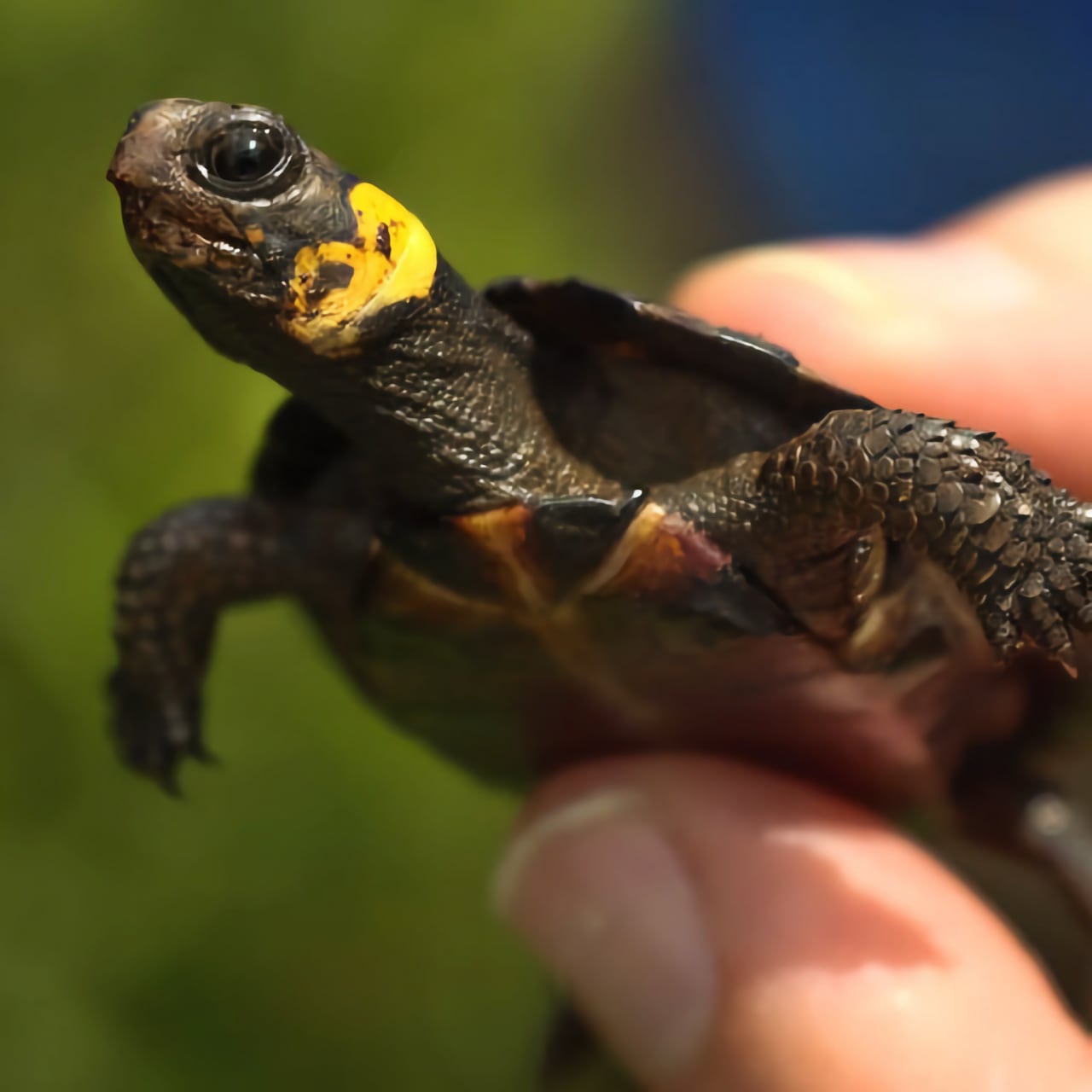The ones there now are less than a year old, but these turtles’ stories started long before the new ARC building’s 2021 completion.
Decades of commitment
Michael Ogle, current curator of herpetology at Zoo Knoxville, credits Bern Tryon, the bog’s namesake, with elevating the importance of turtles, especially bog turtles.
“His passion fueled us,” he said regarding the program. Tryon was Zoo Knoxville’s curator of herpetology from 1984 to his death in 2011. Charlotte Carruth, a herpetology keeper who tends to the turtles, said Tryon started the program back in 1986. The zoo first released turtles into the wild in 1991.
“They were not known to be in our state,” Ogle said of bog turtles. But after Tryon found them, he dedicated the rest of his life to conserving them.
The smallest North American turtle
Zoo Knoxville’s signs near the exhibit explain bog turtles to perhaps uninitiated visitors: Glyptemys muhlenbergii grow to just 4 inches and are among the smallest turtles in the world. The swampy patches in the northeast down into the Southern Appalachians and East Tennessee and Western North Carolina, in which these turtles live, are also small.
“A lot of people look at that and think, ‘Man, if I drained off that water, that would be a great pasture for my cows or to plant some crops,’” said herpetology keeper Charlotte Carruth of these wetland habitats. Indeed, habitat loss is one reason why IUCN, the International Union for Conservation of Nature, lists bog turtles as critically endangered. Some landowners preserve bogs, however, cooperating with the zoo. Organizations like the Nature Conservancy also own and conserve some bog land.
The turtles come from five different closely monitored sites in the wild, Carruth said. The eggs sit in wet moss and stay “nice and damp” for 60 days. The turtles from different locations stay separated, so they can return to their proper bogs.
Carruth said they are “about the size of a quarter” when they hatch. “They are pretty much easy prey for absolutely anything that would want to eat them,” she said. In the wild they hatch in late August or early September when they’d only get one or two meals before sleeping through the winter, a process called brumation.
Exemplary personal initative and perseverance
At Zoo Knoxville, they stay awake and warm in their moss tubs. Carruth fattens them up on pill bugs, earth worms and crickets dusted in protein power. Carruth said after one year these turtles with a captive head start are about the size of a 3-year-old wild bog turtle. Unlike in the wild they have vet care, and no predators can eat them.
Ogle said the project was “moving in the right direction,” but said it usually takes seven to eight years for the bog turtles to breed, so knowing the project’s success may be difficult.
“Bern always said, ‘Well, we’re not going to know if this works in my lifetime.’ So, who knows if it’s going to work in my lifetime? It just takes time,” he said.
“They are critically endangered in our back yard, so it’s a great example for local folks here to see a conservation project in action and see that there’s things that they can do to personally help species, not something on another continent that takes a little more imagination for them,” Carruth said. She said she wanted to continue the efforts so that generations to come could enjoy bog turtles but also hoped at some point there would not be a need to continue the program because the turtles would be thriving in the wild.
Complementing habitat conservation and exotic plant removal
“We’re hoping to make sure that a unique ecosystem doesn’t blink out in front of us, which would be a real shame,” said Ogle regarding the mountain bogs in which they live. He said people are still finding out details, including that they sometimes travel a half-mile despite their size.
Ogle called the zoo’s head start efforts “just one tool in the tool box” along with habitat conservation and exotic plant removal.
Currently, Carruth said, Zoo Knoxville has about 60 eggs and about 48 hatchlings.
The zoo has released 175 bog turtles into the wild as of 2021. In June 2021, over 50 turtle eggs came from North Carolina collection sites to Zoo Knoxville. Zookeepers incubated the eggs until the hatchlings emerged in August, then reared the baby turtles for 10 months.
Most significant conservation effort in the zoo’s history
The zoo lauds it as “the most significant conservation effort in Zoo Knoxville history.” It also lauds Tryon.
“The Clayton Family ARC Campus is his vision come to fruition and a lasting testament to what one individual with a focused passion can do to impact the preservation of a species,” according to a sign outside the ARC.
One of the program’s original breeding females still lives behind that sign.
